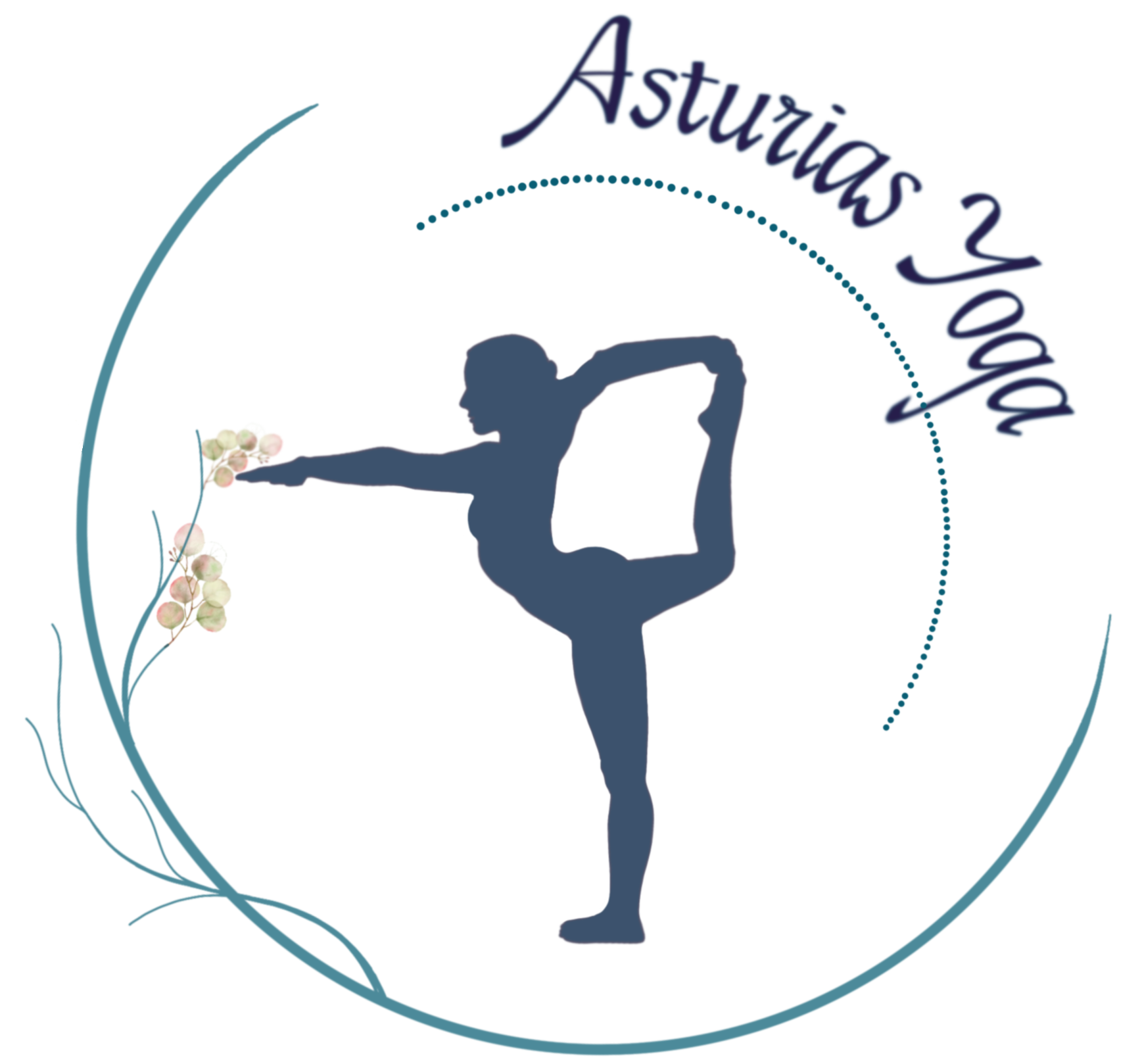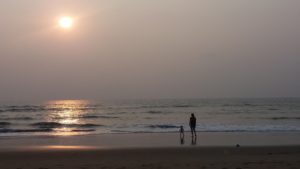
Aly and I only teach six months of the year. During the other six months we take time to focus on our own personal practice. During the winter season, we give ourselves a long period to search for the meaning of what it is we intend to transmit. This winter, as with many previous, the search involved a journey to India.
Actually this year I didn’t plan to go to India. After a long period of teaching I had a reclusive longing. In December nobody visits our mountain shala, silence and a monastic ambiance prevail. This winter the silence at Asturias Yoga promised to be especially deep as Aly was definitely going to India. (inspired by a dream in which she met Saraswati Jois and the subsequent desire to meet her) For me I envisioned deep solitude and introspection, a return perhaps to something like the year I lived here alone with no noise other than birdsong and the sporadic chatter of my own mind, a year in which the seed of Yoga had taken root and began to grow to be the bane of my existence.
The Bhagavad Gita tells us that the key to Yoga in life is to always stay present to whatever we are doing and to continually ‘renounce the fruits‘ of our actions. Let go the specifics of what we want and the world becomes mysterious and surprising. We pay more attention because the form we search is not clear. The essence is what Yogi’s pay attention to, the inner experience. Essence can only be realized by staying tuned to the present moment and the practice of yoga is that tuning. This winter I did go to India, rather than being alone on a mountain, I discovered the essence of what I sought practicing on a cow-dung floor in a coconut palm grove 50m from the shore of the ocean in the tropical state of Karnataka…
Karnataka is a large state in South India and home to Ashtanga Vinyasa Yoga. Within Karnataka lies Mysore, the Mecca for Ashtangis. Within Mysore lies the Kpjayi, the yoga shala founded by Pattabhi Jois himself – the highest ‘have to’ on the tick list for serious practitioners. I believed that was where I was destined. Aly mostly organized the registration for me, I didn’t pay it much attention. One cold Asturian November morning I received an acceptance email. It felt like a blessing. My winter plans were decided and I instantly set about organizing travel. But In my two months in Karnataka I didn’t once set foot in the Kpjayi shala!
There had been an error in the registration process. I had been registered for another school with a very similar name. I only found this out when I was already in India. My initial reaction was devastation. All that air mile pollution, time and expense for what I thought? Not for what I ‘expected’, that’s for sure. But I wasn’t long in getting over it, because I was already beginning to experience the essence of what I had been searching in the most humble of shalas.
I had wanted to spend some time on the beach before heading to urban Mysore. I could think of none better than that just north of the pilgrimage town of Gokarna. The golden sand, fringed by coconut palms stretches from the colorful town to the wild horizon. The winter climate is resoundingly stable – every day sunny with clear skies, every day 30 degree, perfect for bathing in the warm waters of the Indian ocean
The beach is sparsely populated. There are 2 small fishing villages throughout its length The first few kilometres have some simple accommodation for travelers. I took a tree-hut perforated by sea breeze and the rhythmic sound of breaking surf. Nature here is vibrantly alive, in the ocean one sees flying fish and dolphins, in the trees many varieties of brightly coloured birds and the occassional monkey. Access from inland to my treehut was on sandy paths through the patchwork of daytime jungle and bounteous hand worked vegetable plots. This simple natural paradise is also temporary home to a wonderful Ashtanga Vinyasa yoga shala
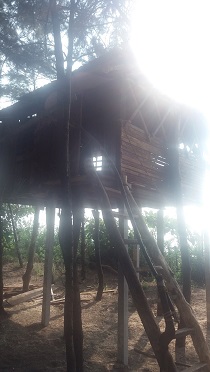
The ancient Yogic text, Hatha Yoga Pradapika, gives advice on ‘where’ a Yogi should practice. It recommends practice on a floor made of cowshit! When I first read that it seemed like a joke. 12 years of practicing Yoga passed before I came to appreciate the truth of it – there in Gokarna. Its better than it sounds, much better! The cow dung floor has a slight spring to it, something like that of a firm yoga mat with a 100% natural feel. We call it shit but in Karnataka, if it emerges from a cow, its a treasure. It is used to fuel stoves and to make flooring. One of the reasons the cow became considered holy in India is the variety of useful products it produces, not least its shit. So popular are these dried dung cakes that a local teacher I met was having to postpone the commencement of his classes until he could obtain a sufficient amount.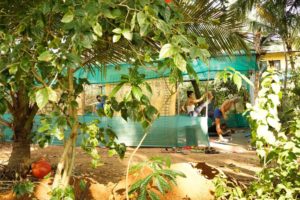
The last couple of winters, Italian Ashtanga teacher Marco Aicardi, has built a new cowdung floor shala in a coconut grove 20 m from the beach every winter. Surrounded by simple netting to prevent insects and animals, one is outside and in touch with the elements. Mysore Style sessions are held early in the morning on a free-donation basis.
As a teacher, Marco himself is confident and re-assuring. He had the knack of turning up beside my mat exactly when I needed help. Rather than pick on tiny debatable details, he leaves practitioners to feel the flow of Vinyasa, encouraging and adjusting when necessary. Marco’s dedication didn’t end with the Yoga sessions. Afterward he would go about mixing clay and cowdung into a paste which he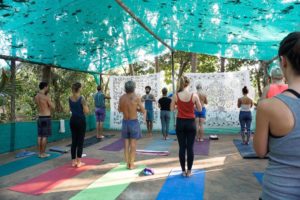 then applied use to repair the floor. While enchanting to practice on, cow dung is a little delicate. Inaccurate Vinayasa of his students required some after-hours reparations on Marcos part, reparation which he went about with karmic devotion.
then applied use to repair the floor. While enchanting to practice on, cow dung is a little delicate. Inaccurate Vinayasa of his students required some after-hours reparations on Marcos part, reparation which he went about with karmic devotion.
Given the setting and teacher, it wasn’t so surprising then when I found out that many of the other practitioners had been there in years previous. We all got to know each other pretty well. An international group that spanned the planet, each morning we shared post practice buzz, life stories and long drawn out breakfasts in the adjacent Cafe Seaweed. In that simple natural environment, with an inspiring teacher and dedicated fellow practitioners, I was reminded once again of my love for the practice and soon forgot about going to Mysore. It all felt simple, natural and pure. It was not what I had planned for the winter, but rather something better. I felt blessed to be part of it
After breakfast, en route back to my tree-hut came my first swim of the day. In the tropical waters there was never any sense of cold. Inspired and energized by this morning routine, I usually spent the afternoon working on our Ashtanga course manual, feeling and focusing on how the practice can relate to every aspect of life.
This routine soon became a daily fixture. If you are dedicated to a two hour morning Ashtanga Vinyasa practice, it demands rhythm and order in your life. Indeed I have often wondered if the challenging nature of the practice is a facade and the real effect is from the order it implicates in our lives. To get through it 6 times a week demands healthy living habits and harmonious relationships with other beings (Yama and Niyama in Yogic terms).
Six weeks passed, each day having the same structure. The weather too remained ever the same, every day warm sunny and clear blue skies, so I wore the same clothes each day and drank the juice of two machete-opened cocunuts. I felt I was living Groundhog day, a Yogic Groundhog day on a beautiful unspoiled beach. Regularity and repetition gave the opportunity to observe the fluctuations of my own consciousness.
There was an interlude at Christmas when I was joined by Aly and baby Satya. Fay, Cal and Masha (who all regularly help run retreats at Asturias Yoga) turned up too, my neighbour Lourdes and out of the blue two friends I had met traveling years before but lost touch with. This all had the feeling of a minor miracle on a near empty beach at the end of the world. For sure I would have had less Christmas visitors had I stayed at home. Cal and I celebrated by going surfing in boardshorts. The local Turkeys pecked and gurgled happily and lived to see the sunset.
I did make it to Mysore in the end. For the final two weeks I joined baby Satya and Aly in Gokalum, the affluent (by Indian standards) neighborhood of Mysore where the Pattabhi Jois shala is located. The hurried urban environment took some re-adjustment after Shanti Goakrna. Although happy to be reunited with my wife and daughter, I couldn’t help a sense of ‘Paradise Lost’. But we adapt!
The inspiring thing about Gokalum is not the environment itself, but the level of dedication to the practice of Ashtanga Vinyasa Yoga. One finds a Shala on every corner and the cafes abound with organic superfood and enthusiastic Ashtangis and famous teachers from all corners of the planet discussing minutae of the practice. Classes begin at 4 a.m. And continue throughout the day.
I began to practice once more with Chidananda, a teacher Marco had recommended me. He only had availability in his late morning class. The notorious Mysore heat and Chidananda’s teaching style were intense, so much so that each morning I ended my practice slithering like an eel in my sweat puddle. Postures and Vinyasas that once seemed easy became highly challenging. Each midday as I walked home I felt as though a new me had emerged, that I had left physical and emotional detritus in that puddle.
Aly was having similar experiences with Saraswati and we would usually reflect for an hour or so on each day’s practice, probing the sweet mystery of the effects physical and beyond. In those last days our thoughts turned to Asturias, to once again running retreats, to bringing this practice which we love from its source in India to our beloved home in the mountains.
